Enterprise Management System
The Electronic Annual Accounting System (ePCA) is a Web SaaS Application that provides the user with a set of functions to report accounting data. In this two year project, I worked as lead UX researcher and UX designer, following the user centered design process. Upon implementation, I was in charge of functional software testing.
Keywords
User Story
Interviews
Information Architecture
Wireframing
Prototyping
Design Patterns
Functional Testing
User Testing
Figma
SaaS

Team
Applied Computing Group (ACG)
Role
UX/UI Lead Designer
Location
Brazil – Remote
Timeline
March 2022 – Present
Problem: How to support the accountability process in the [omitted] organization, with a system that considers the specifics of the domain and guides users through the accountability reporting and validation stages.
Solution: A web SaaS application that can be used to upload accountability files and data, that works according to the [omitted] organization calendar.
Methodology
The design process considered four main stages: understand, define, design and evaluate. This process was based on the user centered design process and aimed at meeting the needs of end users within the [omitted] company. During the understand phase, user research was carried out, while understanding the problem domain. During the define phase, we organized the obtained data and characterized the project in terms of problem and goals. Then, we produced user flows, the information architecture, wireframes and prototypes during the design phase. Finally, we evaluated our proposal following usability standards and the opinions of end-users.

Execution and Results
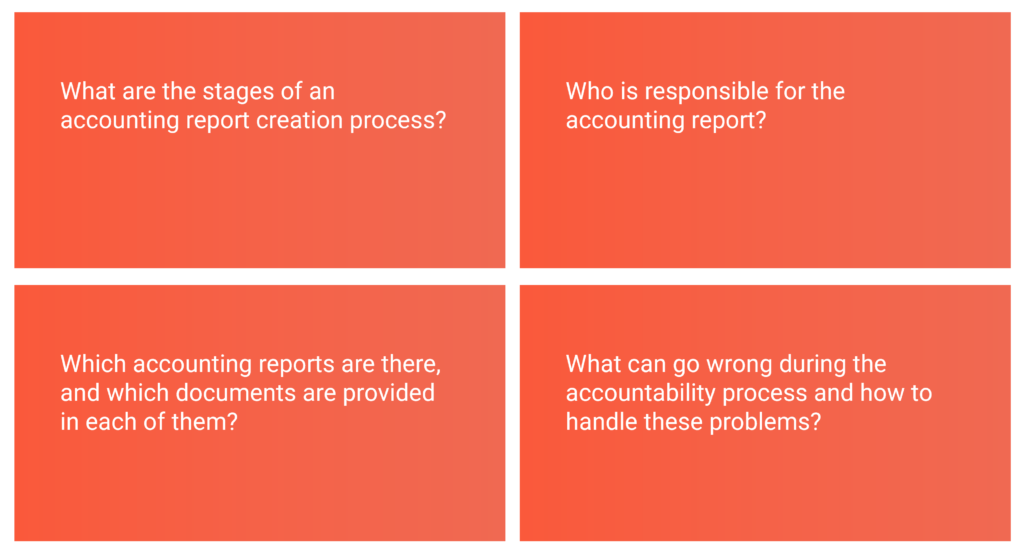
(UNDERSTAND)
01
We carried out semi-structured interviews to gather data regarding the process for generating an accounting report. We asked end-users who provided reports and end-users who evaluated them.
As end-users were not always available, we also conducted a document analysis of accounting reports that have been generated in the past. Also, we analyzed forms and rules for providing the accounting information. We also analyzed: (a) previous rendering of accounts in which different types of reports were created; and (b) specific problems that were identified during the report production and evaluation processes.
(DEFINE)
02A
We analyzed the data from the interviews and document analysis to define which problems users needed support with.
The goal of ePCA is to allow managing accountability and audit processes for both auditors and auditees in different moments of the report and audit processes.
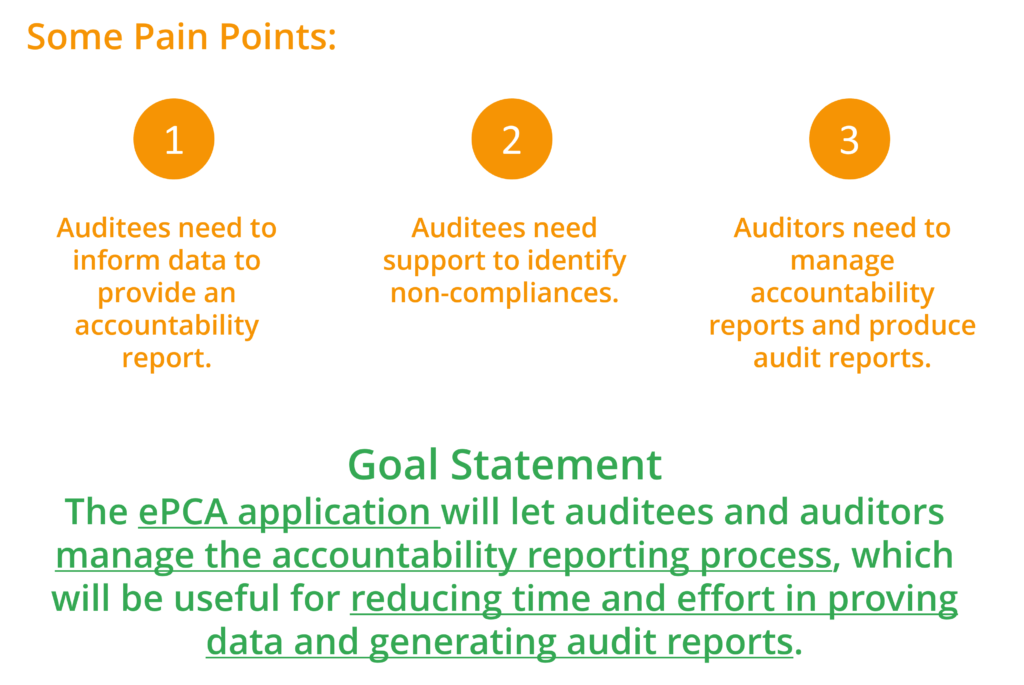
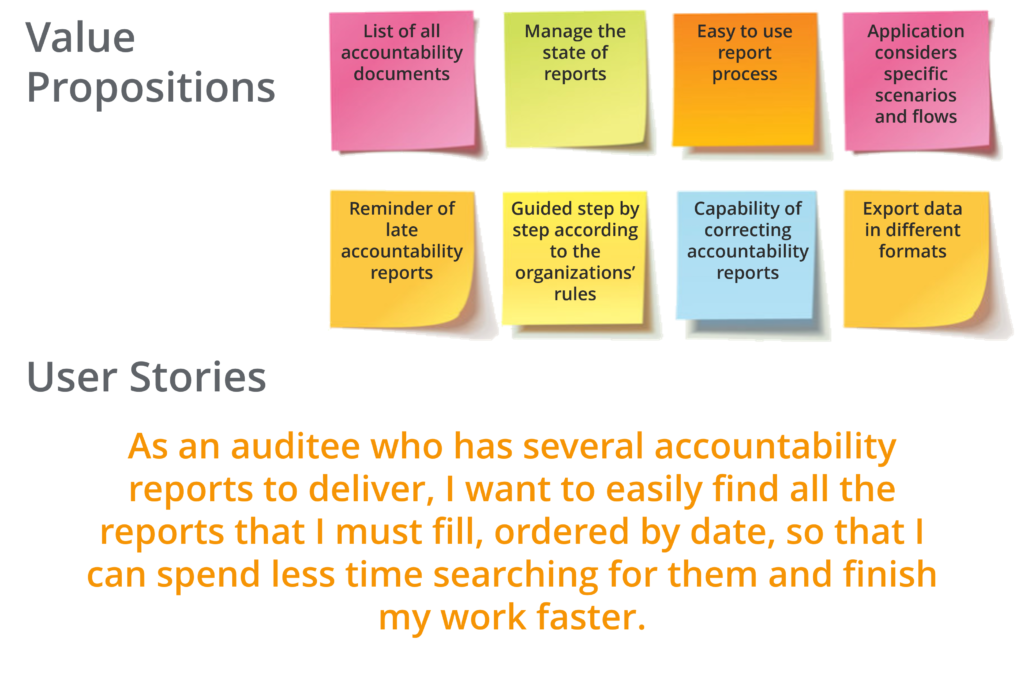
(DEFINE)
02B
Value propositions summarize why a consumer should use a product or service. We defined what the ePCA software provides users and how it addresses users’ pain points.
Also, we defined user stories according to the roles that users could play in the system, to make sure that we were addressing and solving the key problems our users might face when engaging with ePCA.
(DESIGN)
03A
We proposed user flows using adapted activity diagrams to display the complete path a user takes when using a product. The user flow lays out the user’s movement through the product, mapping out each and every step the user takes. We used these flows to guide the identification of screens and, later, the proposal of wireframes and prototypes.
The user flow presented in this page is related to the accountability report functionality for the Auditee user.
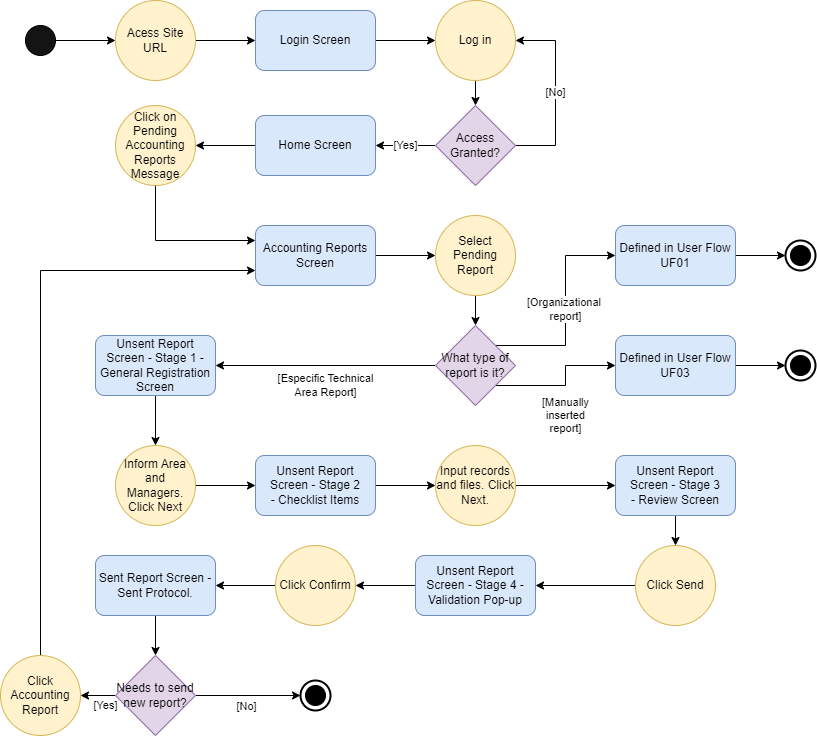
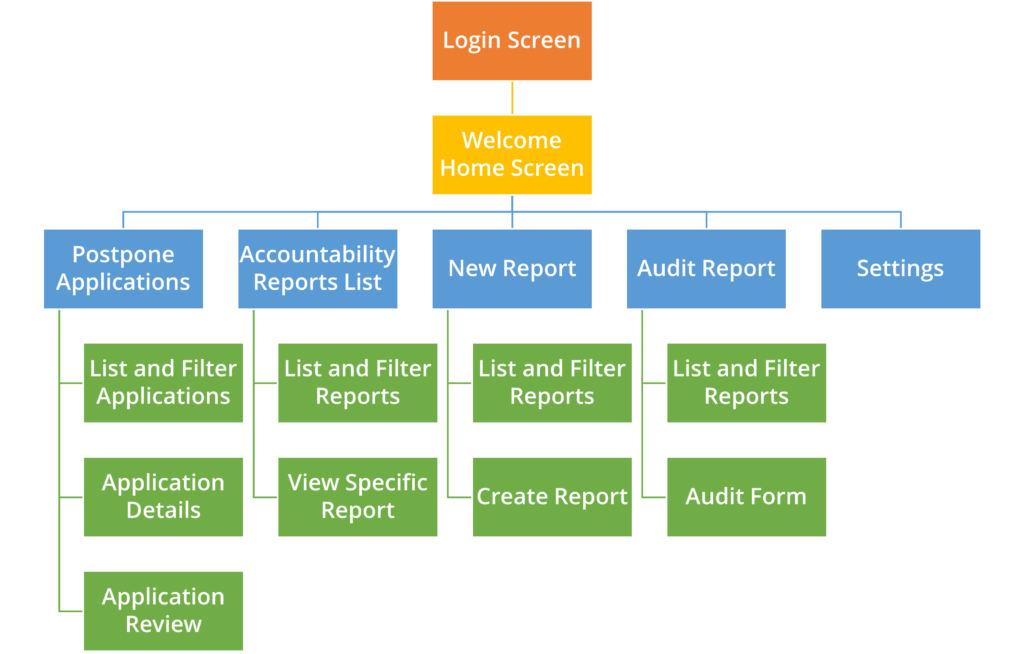
(DESIGN)
03B
We proposed the information architecture for organizing, structuring, and labeling content in an effective way. Our goal was to help users find information and complete tasks.
The information architecture presented in this page displays pages and interactions of the ePCA application from the point of view of an Auditor user.
(DESIGN)
03C
A wireframe is a basic outline of a digital experience. In this project, we used them to establish the basic structure of the pages and to highlight the intended function of each element.
The wireframe presented in this page is a low fidelity and digital wireframe of one of the pages for inputting files during the report accountability process. This functionality is presented to auditee users.
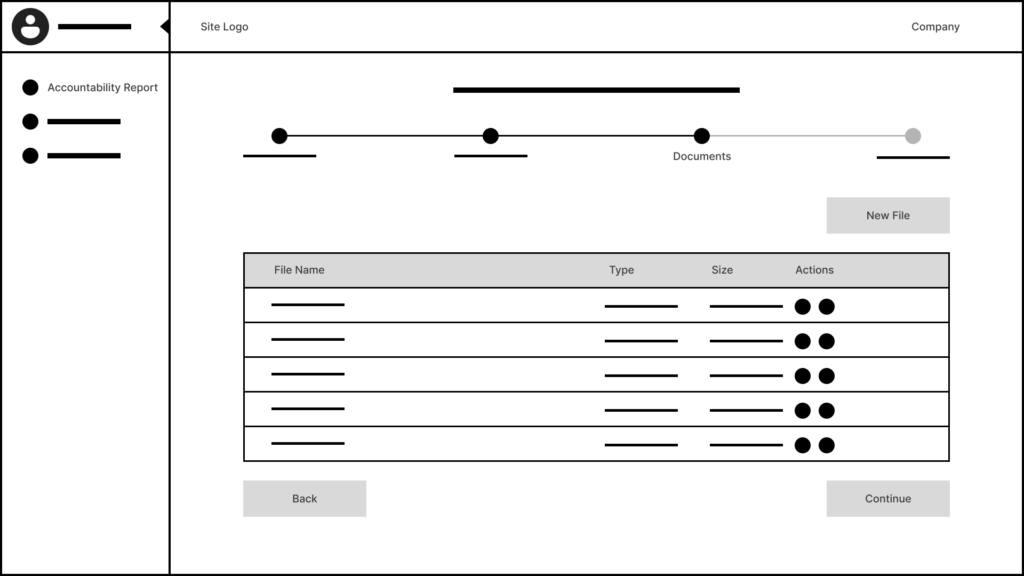
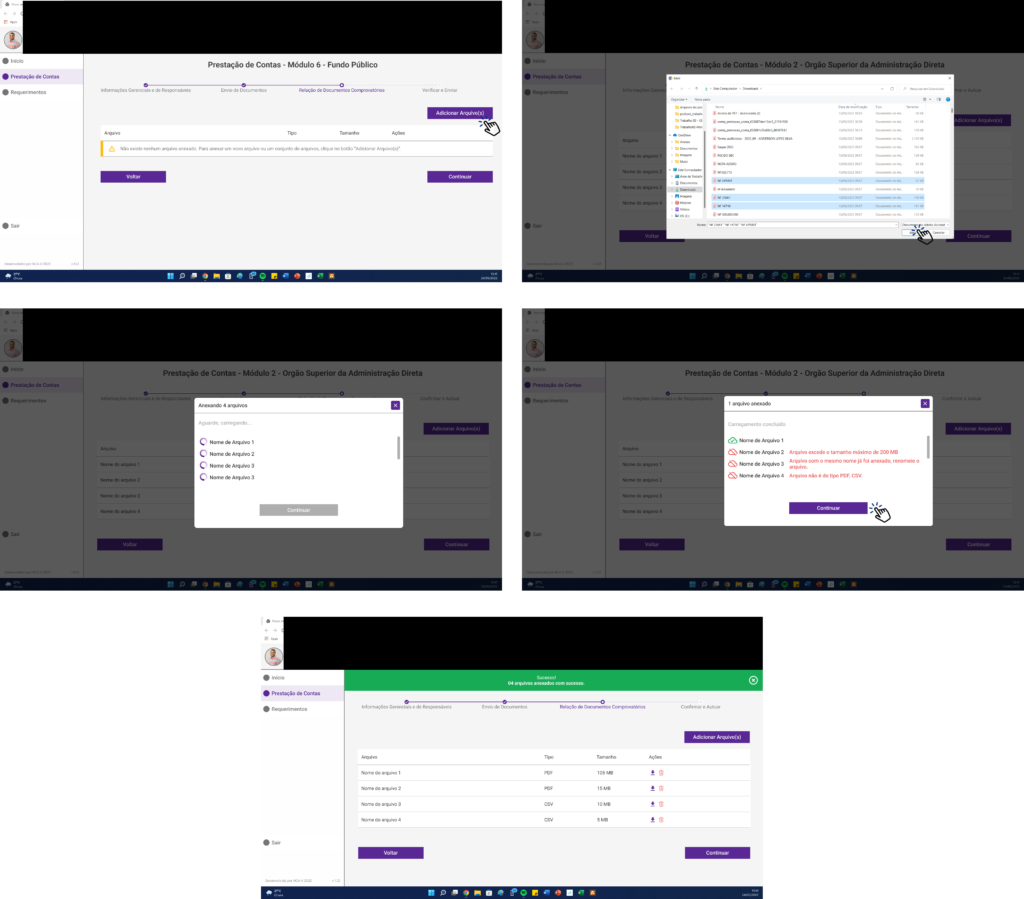
(DESIGN)
03D
A prototype is an early model of a product that demonstrates its functionality, without actually building the entire product. We developed prototype for the ePCA project that showed stakeholders and potential users what our design idea could do. Users interacted with the prototype and we refined the prototype to meet the users needs.
The prototype presented in this page shows the stages for uploading files during the report accountability process. This functionality is presented to auditee users. Some parts have been blurred due to confidentiality reasons.
(EVALUATION)
04
We applied usability inspection, where an evaluator inspects a user interface considering a set of heuristics or usability rules / recommendations. While these methods do not involve users directly, they can provide some useful insights. We considered the Heuristic Evaluation and Quality Criteria in terms of usability, UX and ease of use to verify the interaction flow during test cases. Here, we show an example of a test case and observations of the inspection of the interaction flow during the execution of the test case.
Additionally, end users participated in interviews to provide feedback on their user experience post use. The goal was to verify their satisfaction with the system and its accountability process. Overall, the users indicated that the system met their expectations, while suggesting new functionalities, which are being defined and implemented.
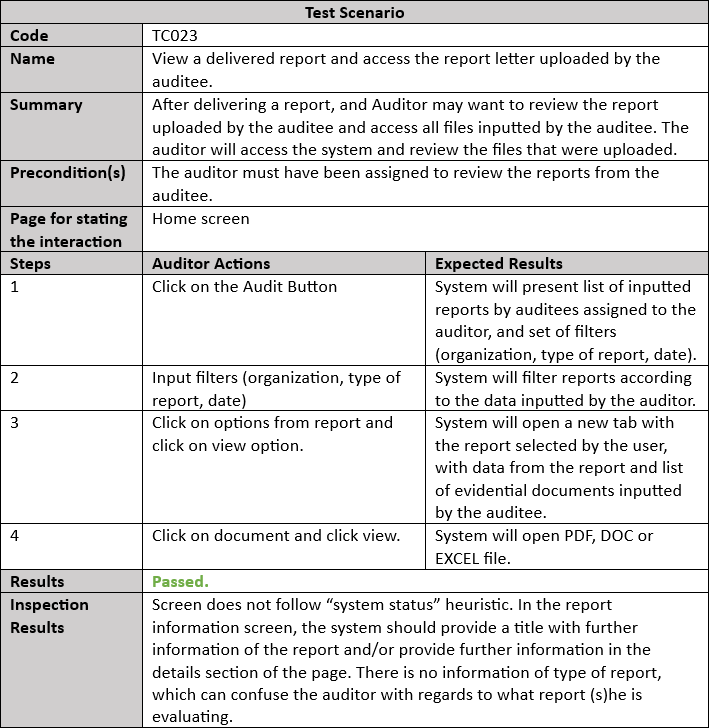
- The End -
ePCA was a special project, not for the impact it had to the [omitted] organization, but also the importance of the positive experiences we achieved through the design of a simple and usable web application. Also, it was a great experience to guide the development process through decisions made by considering the needs from end users.